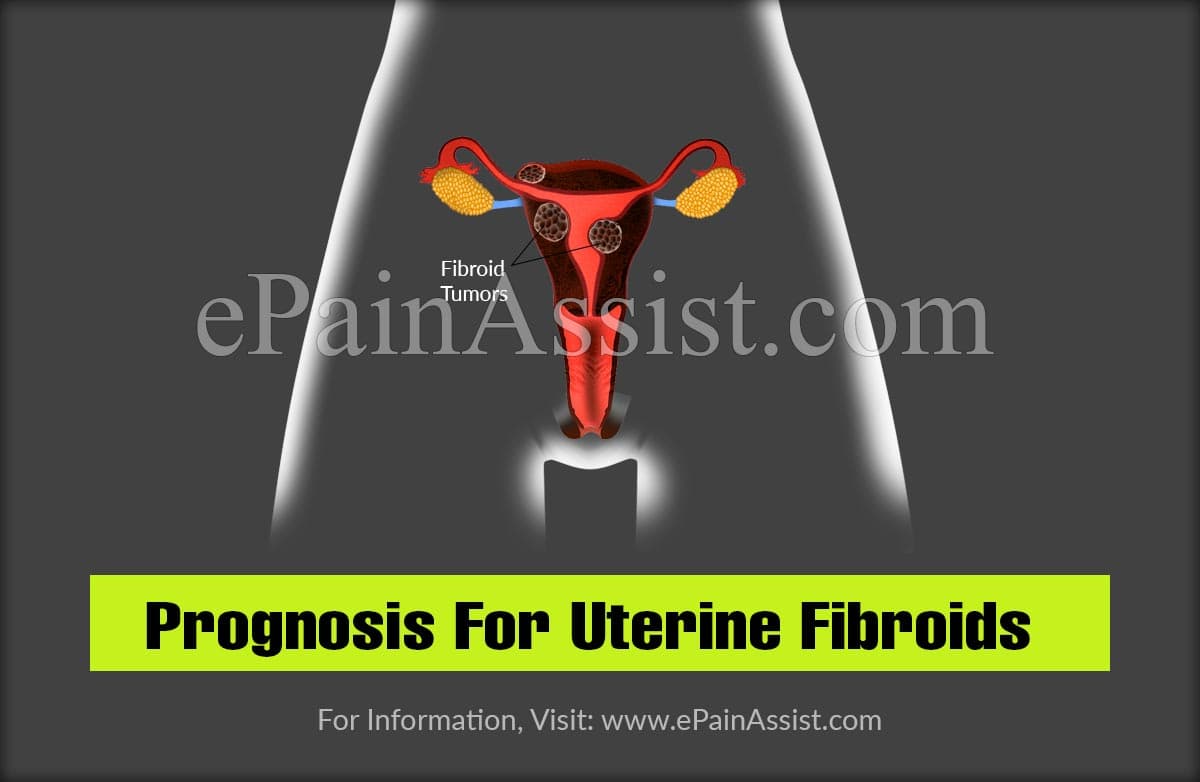Uterine fibroids are benign growths of the uterus. Their sizes vary from that size of seedlings to so much big that it enlarges the uterus. It is often not detected by human eyes. It can be single or multiple in number. It can enlarge the uterus so much that it can reach the ribs. It usually develops in the reproductive age of women. However, it may also develop during or after menopause. It develops due to high levels of estrogen. It is sometimes harmless without symptoms. It may represent symptoms in some cases that include heavy bleeding, pelvic pain, frequent urination, constipation, and others. It is often detected during a pelvic exam or abdominal ultrasound.

Prognosis For Uterine Fibroids
Uterine fibroids are benign or non-cancerous growths of the uterus that may develop in the reproductive period of a woman. They are also termed as leiomyomas or myomas. They neither grow into cancer nor impose the risk of cancer.(1)
The prognosis of uterine fibroids is the outcome of uterine fibroids. It depends on the general health of the patient; the duration that patient has developed fibroids, risk factors, development of complications, treatment procedures, severity, recovery period, survival rates, and death rates.(3)
Fibroids are common entities that develop in the female pelvis. They are benign in nature. They are not likely to turn into cancer and they do not elevate the risk of developing cancer.(3)
When women with fibroids become pregnant, the fibroids grow at a faster rate in pregnancy due to increased blood flow to the uterus and high levels of estrogen. However, they return back to their original size after the delivery of the baby.(4)
Fibroids are likely to influence fertility. However, the size and location of tumors decide the fertility status of the affected women. Those women who are above 35 years and developed fibroids face problem-related to pregnancy. The other factors that affect fertility along with fibroids in this age are low-quality egg and decreased ovulation.(5)
In most cases, uterine fibroids do not show any symptom. In such cases, treatment is not required even If it grows.(4) If they grow fast to affect the functions and integrity of adjacent structures in the pelvis, then, surgical intervention is necessary to treat the situation. They tend to develop in women who enter their menopausal period.(5)
Lifestyle modification with the introduction of iron-rich diet, fresh fruits and vegetables, dry fruits, lentils and fresh dried herbs with regular exercises and avoidance of alcohol and smoking may improve the outcome of fibroids.(2)
Uterine Fibroids Symptoms
Many cases of fibroids are without symptoms. The symptoms do appear depending upon the size, location, and the number of the fibroids. If they exhibit symptoms, then the symptoms include heavy bleeding during menses, long duration of the menstrual period (more than a week), pain or pressure on the pelvic region, frequent urination, incontinence of urine (less urine output), constipation, and pain in the back or legs.(1)
Uterine Fibroids Complications
Fibroids may lead to complications even if the affected woman is pregnant. When she is not pregnant, it may cause severe pain with heavy bleeding, twisting of fibroids, deficiency of blood cells (anemia), infections in the urinary tract, and infertility.(4)
In pregnancy, the fibroid may lead to the blocking of the birth canal or disturbing the free movement of the baby in the uterus due to lack of space in the growing uterus. In such a situation, the CS (cesarean section) becomes necessary. It may also lead to early delivery of the baby. Soon after the birth of the baby, the affected mother may have heavy bleeding.(4)
Conclusion
Uterine fibroids are the benign overgrowths appearing in the uterus. They are non-cancerous. The prognosis or outcome of the fibroids depends upon the age and health of the patient, its duration, severity, complications, and treatment methods.
- https://www.mayoclinic.org/diseases-conditions/uterine-fibroids/symptoms-causes/syc-20354288
- https://www.healthline.com/health/fibroids-natural-treatment#natural-treatment
- https://www.rightdiagnosis.com/u/uterine_fibroids/
- https://medlineplus.gov/ency/article/000914.htm
- https://www.emedicinehealth.com/uterine_fibroids/article_em.htm#what_is_the_prognosis_for_4uterine_fibroids
Also Read:
- What are Uterine Fibroids, Know its Types, Causes, Symptoms, Treatment, Prognosis, Complications
- Do Uterine Fibroids Cause Weight Gain?
- Home Remedies For Uterine Fibroids
- Recovery Period For Uterine Fibroids
- What Is The Best Treatment For Uterine Fibroids?
- How To Prevent Uterine Fibroids?
- Lifestyle Changes For Uterine Fibroids
